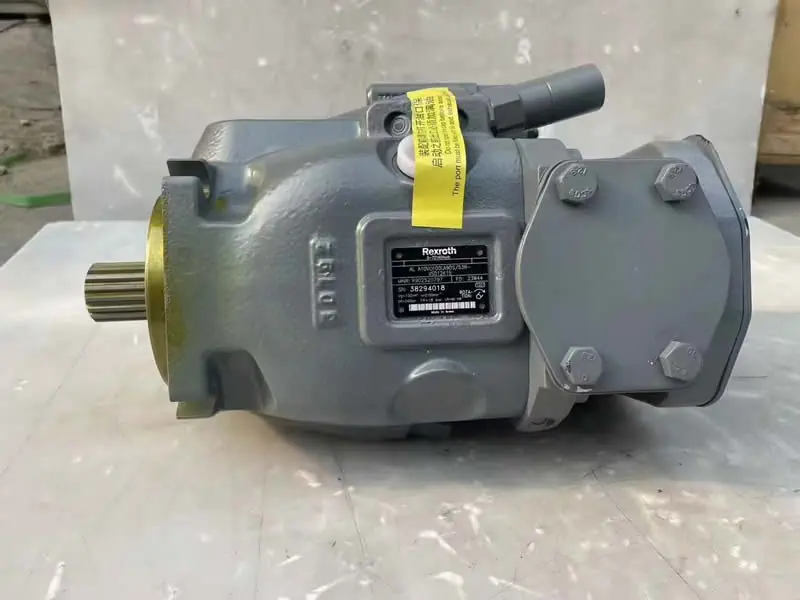Key Factors to Consider When Installing a New Hydraulic Pump
A well-installed hydraulic pump ensures efficiency, reliability, and extended lifespan. At Ningbo SAIVS Machinery Co., Ltd, we specialize in providing high-performance hydraulic components for Industrial Applications. Here are essential factors to consider when installing a new hydraulic pump.

1. Initial Monitoring Period
During the first three months of operation, it is critical to monitor the hydraulic system for potential issues. Check for component wear, loose bolts, unusual oil temperature fluctuations, and early-stage oil degradation. Identifying problems early helps maintain system stability.
2. Start Without Load
Before applying a load, allow the pump to operate without pressure for 10 to 30 minutes. This is especially important in cold conditions, as it lets the hydraulic oil circulate properly and stabilizes the system before full operation.
3. Track Oil Temperature Variations
Monitor oil temperature closely to ensure that it remains within safe operating limits. Understanding the relationship between oil temperature and ambient conditions can help assess whether the cooling and oil reservoir capacities are adequate.
4. Listen for Abnormal Noises
Hydraulic Pumps are highly sensitive to contaminants, trapped air, and overheating. These issues can lead to poor lubrication, excessive wear, and abnormal noises. Identifying unusual sounds early can prevent major system failures.
5. Inspect Instrument Readings
Regularly check pressure gauges, indicator lights, and other monitoring instruments to ensure that the hydraulic circuit is functioning correctly. Fluctuations or inconsistencies could indicate potential problems.
6. Observe Mechanical Performance (For Retrofitted Systems)
If the hydraulic pump has been installed in a modified system, observe its movements under different conditions. Poor hydraulic circuit design or suboptimal component manufacturing can cause unexpected operational issues.
7. Properly Adjust Valves
Ensure correct settings for pressure control valves, Flow control valves, and directional control valves. Misadjustments can result in system inefficiencies, damage to machinery, and even safety hazards.
8. Maintain the Filtration System
Regularly inspect and clean hydraulic filters. Analyzing contaminants in the filter helps determine the cleanliness of the hydraulic circuit and identify sources of potential contamination.
9. Periodically Analyze Hydraulic Oil
Every one to two months, analyze hydraulic oil for signs of degradation, discoloration, or contamination. Clean hydraulic fluid is essential for optimal pump performance and system longevity.
10. Check for Leaks
After continuous operation, inspect hydraulic pipes and fittings for signs of leakage or looseness. Addressing small leaks promptly prevents larger issues and reduces operational downtime.
11. Identify and Troubleshoot Anomalies
Unusual vibrations, warning signals, and abnormal system behavior should be addressed immediately. Use hydraulic circuit diagrams and structured troubleshooting techniques to diagnose and resolve issues effectively.
Following these guidelines will help ensure a smooth and trouble-free hydraulic pump installation. At Ningbo SAIVS Machinery Co., Ltd, we provide premium hydraulic solutions tailored to industrial needs. Contact us for expert advice and high-quality hydraulic components.
Saivs brand
- t6dc ultra-low pulse double hydraulic vane pump
- AZPN series Rexroth Gear Pumps
- Kawasaki K3V series Hydraulic pump
- DBET/DBETE6 Series Rexroth proportional relief valve
- 4wrpeh6/4wrpeh10 series rexroth servo selonoid valve
- Counterbalance Valves CBEA
- 4MM6 Rexroth Hydraulic manual actuation directional valve
- Hydraulic control check valve rexroth Z2S6 Z2S10 Z2S16 Z2S22 Z2S22-1-52/V
- rexroth 4wrke16 4wrke25 series electro-hydraulic proportional directional valve
- rexroth 4wrze10 4wrze16 4wrze25 4wrze32 series electro-hydraulic proportional directional valve